By historical standards, New York is still a relatively new city — a youngster compared with the likes of London, Cairo or Beijing. But in its short life, New York has captured the world’s collective attention like no other.
Whether it’s entertainment, restaurants or finance, everyone everywhere seems to know everything about New York. Its architecture is no exception.
Viewed on TV and in movies or seen in person, New York’s buildings are famous world over.From soaring skyscrapers to hallowed entertainment venues, take a tour with CNN Style and discover fascinating facts and historical tidbits of 20 celebrated buildings:
If you’re not quite the expert when it comes to colors, don’t worry. What we recommend is to start with a small space in your house, like a home office or a guest room, rather than big areas like the living room or kitchen. That will give you a chance to experiment and find out what you like. You also can test some wallpapers or decorative objects without making a major financial commitment.
Apollo Theater
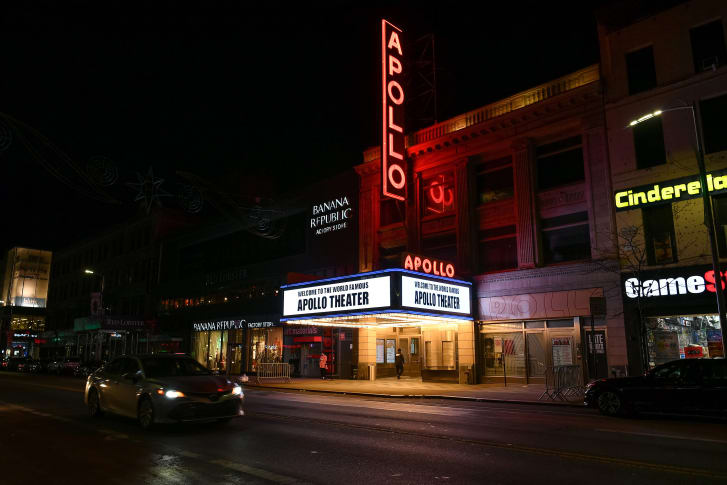
Oh, the shows this storied Harlem institution has seen — from Billie Holiday and Count Bassie to Lauryn Hill and Prince. Not to mention its countless, beloved amateur nights.
As a building, the neo-Classical Apollo Theater helps anchor Harlem. As an entertainment venue, it’s an anchor of African American music and culture.
It started life as Hurtig and Seamon’s New Burlesque Theater. After a city campaign against burlesque, it become the Apollo and began offering shows of interest to Harlem’s growing African American population.
It’s had ups and downs over the decades, including a longtime closure starting in 1978.
In 1985, a renovation and reopening was celebrated with a TV special, “Motown Salutes the Apollo.” More recently, it saw the addition of more than 1,500 house seats and restoration of its 125th street facade.
Did you know? The theater has national historic landmark status, and in 2006, James Brown’s body lay in state on the Apollo’s stage.
Chrysler Building
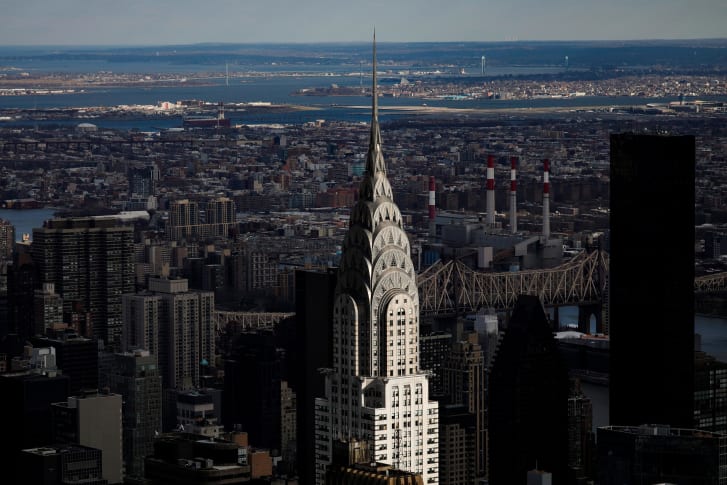
The Chrysler Building was the tallest building in the world for 11 fleeting months, but its everlasting glory is that marvelous Art Deco crown.
Those seven radiating arches, with an exterior of shiny stainless steel that brilliantly reflects sunlight, have made the Chrysler a permanent grande dame of the Manhattan skyscraper set even though other buildings now eclipse it in height.
In case you’re wondering, the Chrysler is 1,046 feet (319 meters) from base to tip. Other architectural touches that give the building memorable flair: distinctive eagle gargoyles and triangular windows in the cap.
Did you know? The lobby is to-die-for gorgeous with red Moroccan marble walls and a ceiling mural depicting scenes from the Chrysler assembly line and other symbols of industrial progress.
The Cloisters
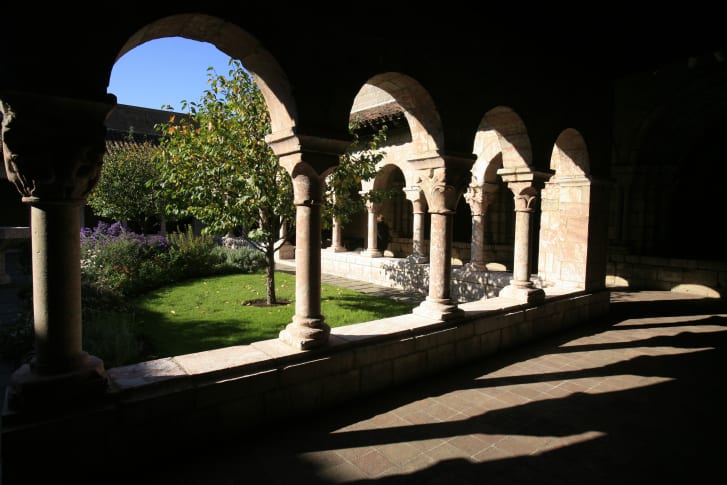
If Midtown’s Chrysler Building was New York’s bold thrust to seize the 20th century for America, then the Cloisters in the upper tip of Manhattan was the city’s quiet nod to times long ago and places far away.
It’s a branch of the Metropolitan Museum of Art (see below), and it’s focused on the medieval art and architecture.
You’ll find four cloisters: Bonnefont, Saint-Guilhem, Trie and Cuxa, whose tower dominates the site. They are reconstructed from parts of actual Romanesque and Gothic structures from France that were incorporated into modern buildings.
Did you know? While it’s renowned for its Unicorn Tapestries, the Cloisters also boasts impressive stained-glass windows, including those from the castle chapel at Ebreichsdorf, Austria.
The Dakota

From its distinctive look to its roster of celebrity residents (including Lauren Bacall, Leonard Bernstein and Roberta Flack), this Upper West Side gem ushered in the New York luxury apartment scene and remains the standard for classic Manhattan living.
Architect Henry Janeway Hardenbergh designed the Dakota in the German Renaissance style, says Tom Miller, author of “Seeking New York” (Universe Publishing 2015) and the Daytonian in Manhattan blog.
Some historians also call it “Chateauesque,” Miller says. “The confusion in terms is a result of Hardenbergh’s mixing of history styles; what was at the time sometimes referred to as a ‘happy mix.’ “
With beige brick, cast iron and brownstone, the building has intriguing shapes and angles and features spires and gargoyles.
Miller says don’t miss the “brooding German Renaissance faces and dragons that form the supports of the iron railing around the light moat at sidewalk level.”
Did you know? The 1968 cult horror classic “Rosemary’s Baby” used the Dakota’s exterior as a location shoot (the building was called The Bramford in the film). And former Beatle and then-resident John Lennon was killed outside the main door in 1980.
Empire State Building

Almost 90 years later, the Empire State Building’s stats still impress. Architectural height: 1,250 feet (381 meters). If you count the antenna on top: 1,454 feet (443 meters). Number of steps: 1,872 from street level to the 103rd floor. Number of elevators: 73.
And while the Empire State Building lost its status as world’s tallest building in the early 1970s, the Art Deco giant never lost its grip on the public’s imagination.
Easily visible from many vantage points in Midtown Manhattan and favorite film and TV spot (from “King Kong” to “Gossip Girl”), it’s sure to remain one of NYC’s most quintessential structures.Did you know? The Empire State Building took less than 14 months to build. There were plans for it to become a docking station for dirigibles (a function it served one time).
Flatiron Building
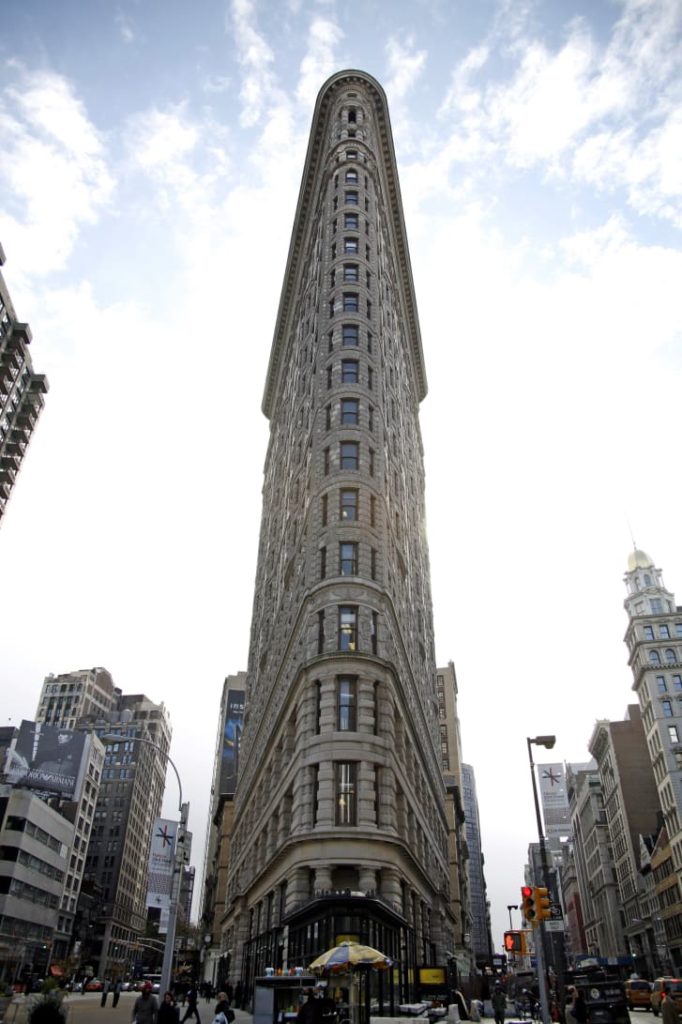
The odd and the practical often coalesce in New York. The Flatiron Building is a delightful example.
At 285 feet (87 meters) tall, 22 stories and only 6.5 feet wide at its narrowest point at the top, the Flatiron is dwarfed by many a Manhattan building.
But its unusual triangle shape — built to accommodate the footprint leftover by the intersections of 23rd Street, Fifth Avenue and Broadway — make it a standout.
Like the Eiffel Tower, the building met with critical derision early on, but it quickly became a public favorite with its Beaux Arts facade. It was one of the first steel-skeleton structures in the city.
Did you know? The Flatiron’s first name was the Fuller Building, and it held no restrooms for women. The name was changed, and so was that restroom situation.
Grand Central Terminal

What a magnificent and stylish way to get from A to B! Grand Central Terminal competes with the great classic railway stations of Europe with its Beaux Arts design and cavernous concourse.
Decorative flourishes in the main hall include bronze and stone carvings, sculpted oak leaves and acorns, the celestial ceiling mural and the famed four-faced clock.
Like other New York institutions in the 1970s, its beloved Oyster Bar hit hard times and even closed for a couple of years. But a revitalized menu and a dining hall with high, vaulted ceilings returned to former glory gave the restaurant a second life.
Did you know? GCT sees roughly 750,000 visitors every day. And it’s not just the terminus of the Metro-North Railroad — it’s a hub for subway, bus and taxi services, too.
Guggenheim Museum
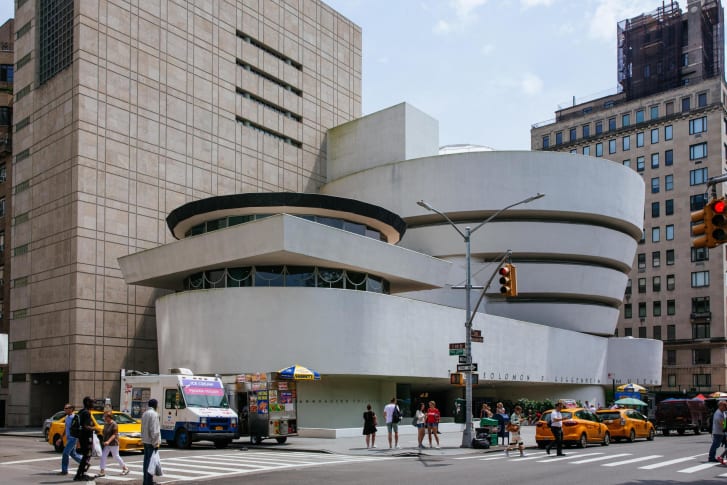
The Solomon R. Guggenheim Museum was one of the visionary works of architect Frank Lloyd Wright, who died six months before the building opened.
It’s hard to imagine a more fitting place to display contemporary, avant-garde pieces than this contemporary, avant-garde building.
The Guggenheim follows Wright’s adopted mantra of “form follows function.” An unusual ramp gallery continuously spirals along the outer edges of the building from ground level to skylight. Inside, visitors ascend or descend the ramp as they observe the artwork — and each other.
Interestingly, the nautilus shape of the building is wider at the top than at the bottom.
Did you know? Wright wasn’t a fan of New York — a “vast prison with glass fronts” as he called it. But he was thrilled the Guggenheim was to be situated across the street from Central Park, which appealed to his fondness for inspiration from nature.
Macy’s
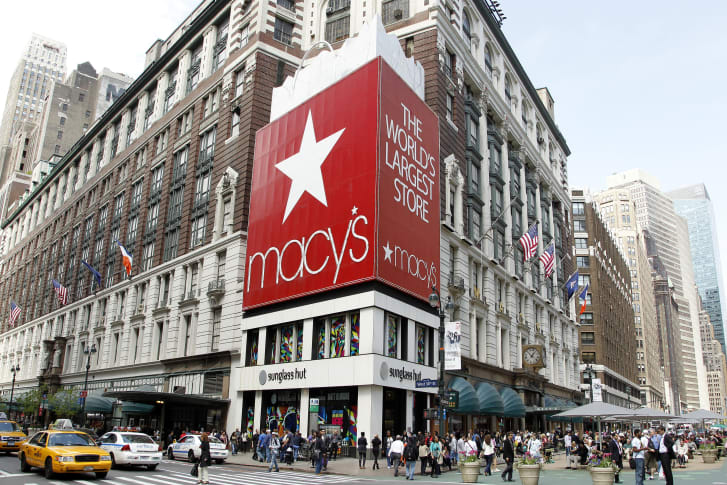
New York is a shopping city. And while you’ll find more luxurious and ornate offerings, it’s hard to beat the Macy’s flagship Herald Square store for Big Apple retail nostalgia.
When it first opened, Macy’s was a cutting-edge store with 33 elevators and four wooden escalators (the first US store to utilize them). In fact, you can still ride the original escalators at Herald Square.
In 2014, it unveiled a full renovation that restored many of its original elements of Beaux Arts classicism while mixing in contemporary, open elements.
The flagship store is also the traditional ending point of the annual Thanksgiving Day Parade.
Did you know? This Macy’s is one of the largest department stores in the world. It covers a city block. It’s also the setting in the opening scenes of the Christmas classic “Miracle on 34th Street.”
Madison Square Garden
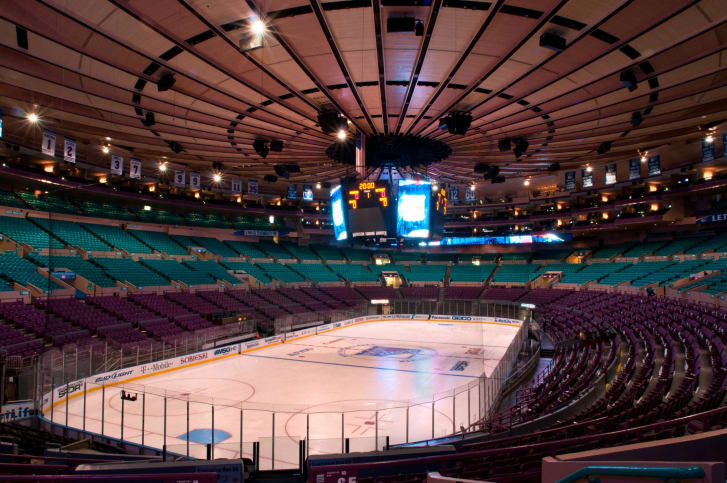
Madison Square Garden’s website calls the building “The World’s Most Famous Arena.”
It would be hard to argue the point — after all, it’s the place where the New York Knicks and New York Rangers play hoops and hockey. And it’s where Joe Frazier beat Muhammad Ali in their “Fight of the Century” back in 1971. And it’s Billy Joel’s “home court,” who has given a once-a-month concerts there since 2014.
The building that opened in 1968 was actually the fourth arena to be given the Madison Square Garden name.
Its circular shape and cable-supported ceiling made it an engineering marvel for its time, according to MSG’s history page.
Did you know? Along with its storied sports and entertainment history, MSG has been host to papal visits — Pope John Paul II in 1979 and Pope Francis in 2015.
Metropolitan Museum of Art
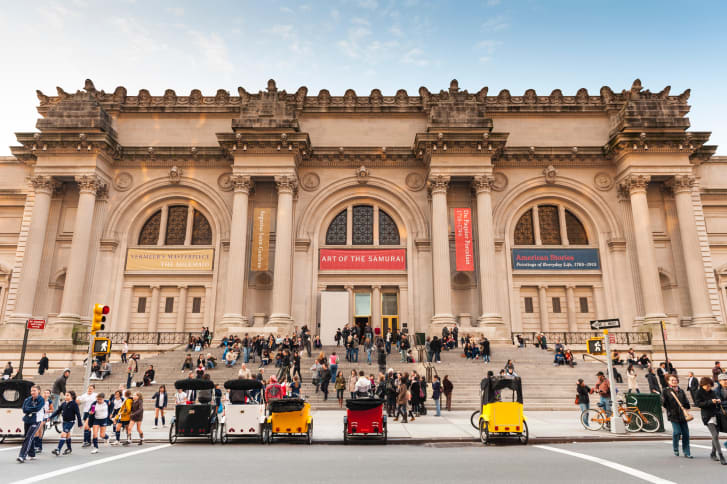
It makes a museum fan’s heart swell — standing on the Fifth Avenue sidewalk, staring at the gorgeous Beaux Arts exterior and contemplating the worldly treasures inside the Metropolitan Museum of Art.
But did you know you’re actually looking at an addition? The Met’s done a lot of growing over the decades. If you want to see the Met’s original red-brick facade, head to the Robert Lehman wing.
The Fifth Avenue facade pictured above and the Great Hall didn’t open to the public until 1902.
Speaking of additions, one of the most impressive has to be 1978’s Sackler Wing, which houses the Egyptian Temple of Dendur.
Did you know? While ascending the steps off Fifth Avenue to the main entry into the Great Hall is glorious, a rather nondescript entry at 81st Street at the Uris Center for Education lets you avoid the crowds. And if you have accessibility concerns, this is definitely the one to use.
New York Public Library
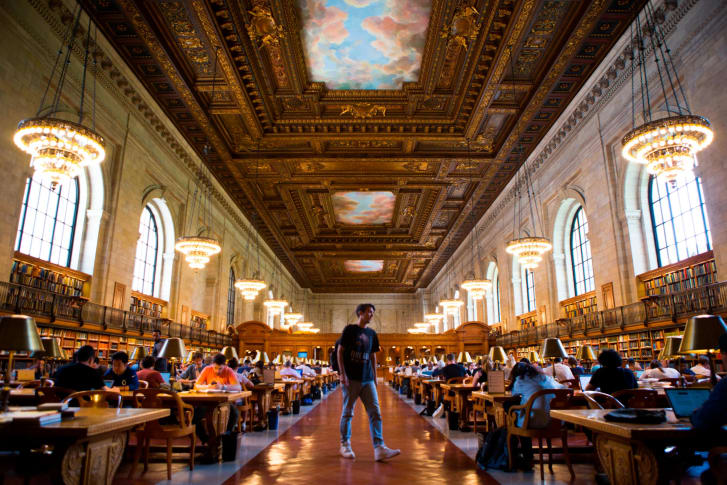
From the iconic lion statues guarding the entrance to the rich and elegant interior, the main branch of the New York Public Library at Bryant Park is a reminder that books — and the libraries that hold them — matter.
Technically called the Stephen A. Schwarzman Building, the exterior is another superb example of Beaux Arts architecture in the city.
Inside, the recently renovated Rose Reading Room is a sumptuous stunner. It’s 78 feet by 297 feet — that’s about the length of two city blocks. It features 52-foot-tall ceilings with murals of vivid skies, billowing clouds and classic cherubs.
Did you know? The library is doing its part to restore rail service in the United States! In the video above, check out the fun and practical book train that was added in 2016 as part of the Rose Reading Room renovation.
New York Stock Exchange
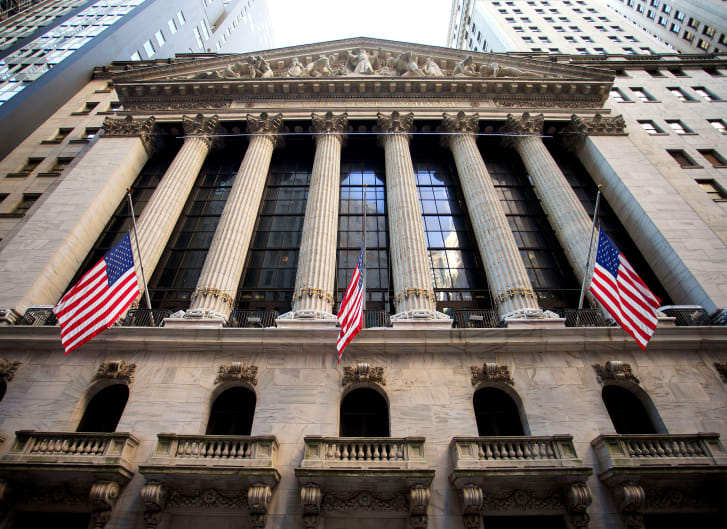
Culture and the arts are nice, but let’s face it: New York’s a money town when you get down to it. And the New York Stock Exchange, with its Roman-inspired, neo-Classical facade and six huge columns, is its beating heart.
A 1985 Landmarks Preservation report said “the design with its giant portico, colonnades and sculpture imparts a sense of austerity and massiveness coupled with security, in keeping with the wishes of the clients.”
The architect was George B. Post, one of New York’s leading designers of the era. The current building at 11 Wall Street actually replaced an older exchange.
Did you know? Most of Post’s buildings in New York were unfortunately razed. But his building for The New York Times from 1889 to 1903, called 41 Park Row, still stands and is now owned by Pace University. Another of his works: the Wisconsin State Capitol in Madison.
One Times Square
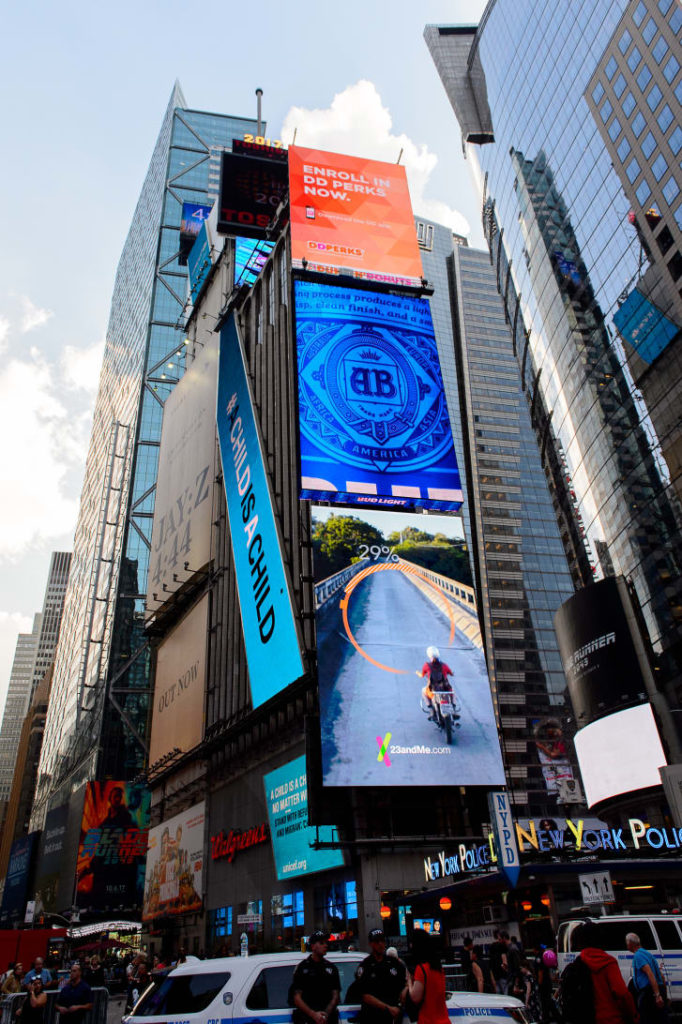
The One Times Square building makes this list for one key reason: location. Occupying prime space in the human whirlwind that spins in Times Square, it’s hard to miss.
Oddly enough, it sits almost empty today. Its interior is reportedly an eery calm from the cacophony outside its walls.
You really don’t see much of its historical facade. Its main function is to serve as an enormous support for those giant LED screens that put the bright lights in the big city.Did you know? The New York Times certainly got around in days past. One Times Square was built to be the newspaper’s headquarters after its stint at 41 Park Row. But the paper occupied the building for only eight years before its next move to 229 West 43 (for a much longer stay).
One World Trade Center
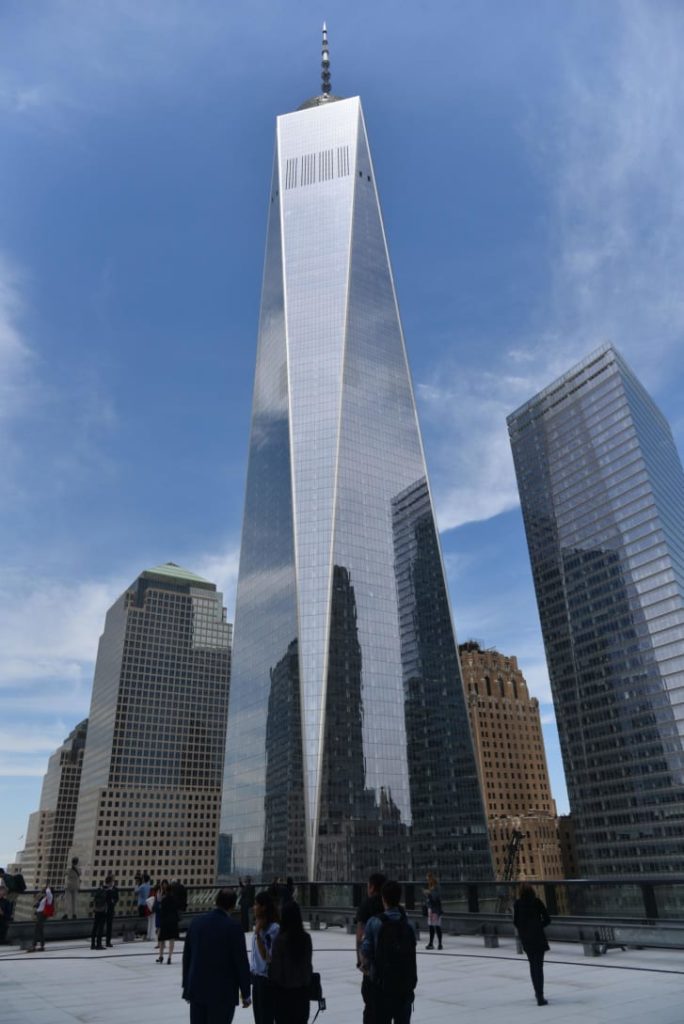
Counting the antenna, One World Trade Center is tallest building in the city at 1,776 feet (and yes, that was on symbolic purpose).
It stands tall in the hearts of New Yorkers as the resilient response to the 9/11 terror attacks that took down the twin towers where One World Trade Center now stands.
The single tower is very different from its boxy predecessors with a sleek design that forms eight long isosceles triangles. A square, glass parapet crowns the tower, creating a kaleidoscope effect.
The tower has public observation deck 1,250 feet (381 meters) up. Also on site at the complex is the 9/11 Memorial & Museum.Did you know? One World Trade Center is the only skyscraper in the United States that makes the list of the world’s 10 tallest buildings.
Radio City Music Hall
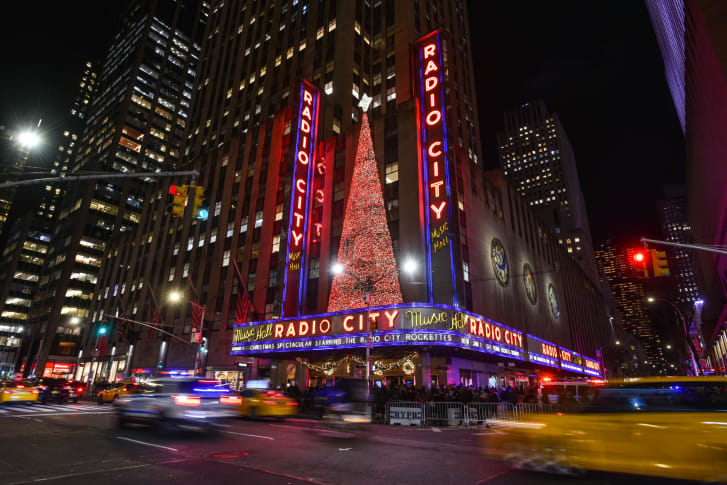
It’s home to the high-kickin’ Rockettes, so it’s good that Radio City Music Hall is the world’s largest indoor theater.
John D. Rockefeller Jr. envisioned a gleaming complex in Midtown Manhattan while the city was in the grips of the Great Depression. Radio City Music Hall was the first building finished, and according to its website, it was to be “a place of beauty offering high-quality entertainment at prices ordinary people could afford.”
A few RCMH stats and superlatives:
— The auditorium is 160 feet from back to stage.
— The ceiling is 84 feet high.
— It has no columns, so no obstructed views.
— The stage is framed by a proscenium arch that’s 60 feet high and 100 feet wide.
— Its gold stage curtain is the world’s largest.
Did you know? The next two buildings on this list are both close walking distance from Radio City if you want to score an easy architectural trifecta.
30 Rock

Radio City was just the first structure of Rockefeller’s Midtown complex to open. 1933 saw the opening of the now-iconic tower 30 Rockefeller Plaza.
The Art Deco building has 70 above-ground floors and rises 850 feet (259 meters).
In 2015, Steve Cuozzo of hometown tab New York Post called it “the greatest building in the world. … No skyscraper in New York, or anywhere, so fully realizes as does 30 Rock the urban ideal of an architecturally magnificent, polyfunctional edifice serving commerce, art and recreation equally.”
Did you know? The building has gone through some name changes. Since 2015, it’s been officially known as the Comcast Building. Other names: GE Building and RCA Building.
But folks still mostly go with the nickname associated with history and the Tina Fey sitcom, “30 Rock.” We think Kenneth would approve.
St. Patrick’s Cathedral
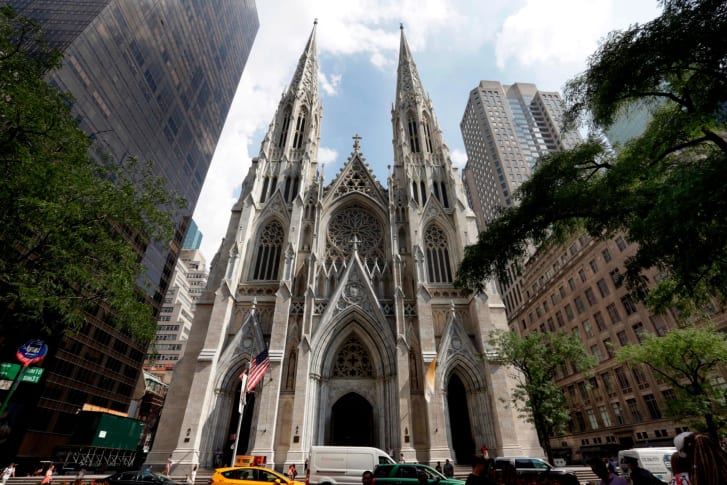
New York is a city with many houses of worship, but its standout has to be St. Patrick’s Cathedral.
The marble Gothic Revival structure, with its 330-foot spires that were added in 1888, is inspirational and memorable even as it’s surrounded by taller skyscraper neighbors.
Its main entry double doors are made of ornately decorated bronze featuring important Catholic historical figures, including the namesake St. Patrick. They are each 16 1/2 feet by 51/2 feet and weigh 9,200 pounds, according to the Associated Press.
The architect of St. Patrick’s was James Renwick Jr., who also designed two Smithsonian buildings in Washington.Did you know? Cathedrals are often a work in progress. Installation of the upper windows, including the much-loved grand rose window over the west portal, wasn’t finished until the 1950s.
United Nations headquarters

Technically, the United Nations complex is not a New York City building. Not even the United States has jurisdiction there.
But it’s on the island of Manhattan, perched alongside the East River. And it’s famous. So we’re counting it.
The complex has four main buildings: the Secretariat (that’s the tall building), the General Assembly (whose interior hall is seen above), Conference Area and the Library.
The buildings very much reflect the mid-century design of the era with an emphasis on sleek lines, geometric forms and little in the way of ornamentation.
Origination: https://edition.cnn.com/style/article/famous-buildings-new-york-city/index.html




Recent Comments